Seven Month review of the R1T
Short review of our R1T, and the most common questions we have received during ownership.
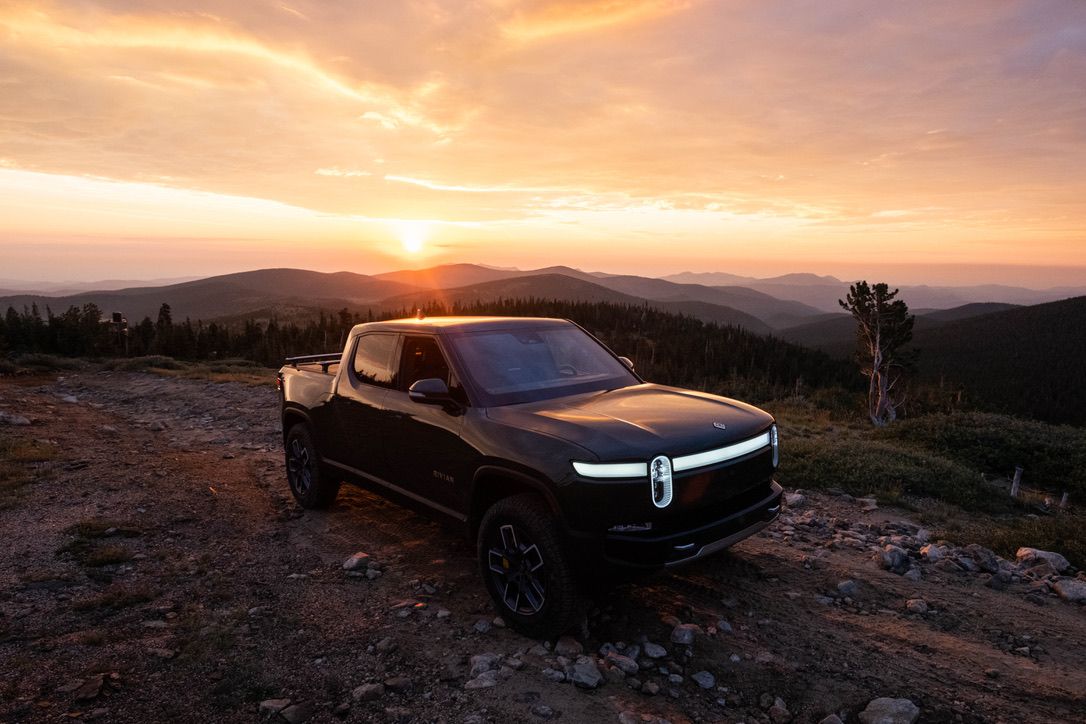
We have now had the Rivian R1T for seven months and 13,000 miles, and probably talked to nearly that many people about it. (Okay, maybe not 13,000. But definitely hundreds, if not over a thousand). We haven't strayed all that far from home, but we have been all Colorado and Southeastern Utah in this thing, and it has impressed us, and everyone else. For this review, we decided to take some of the most commonly asked questions, and come up with the best answer we can. Some questions are more EV-related, but all answers will be specific to the Rivian R1T.
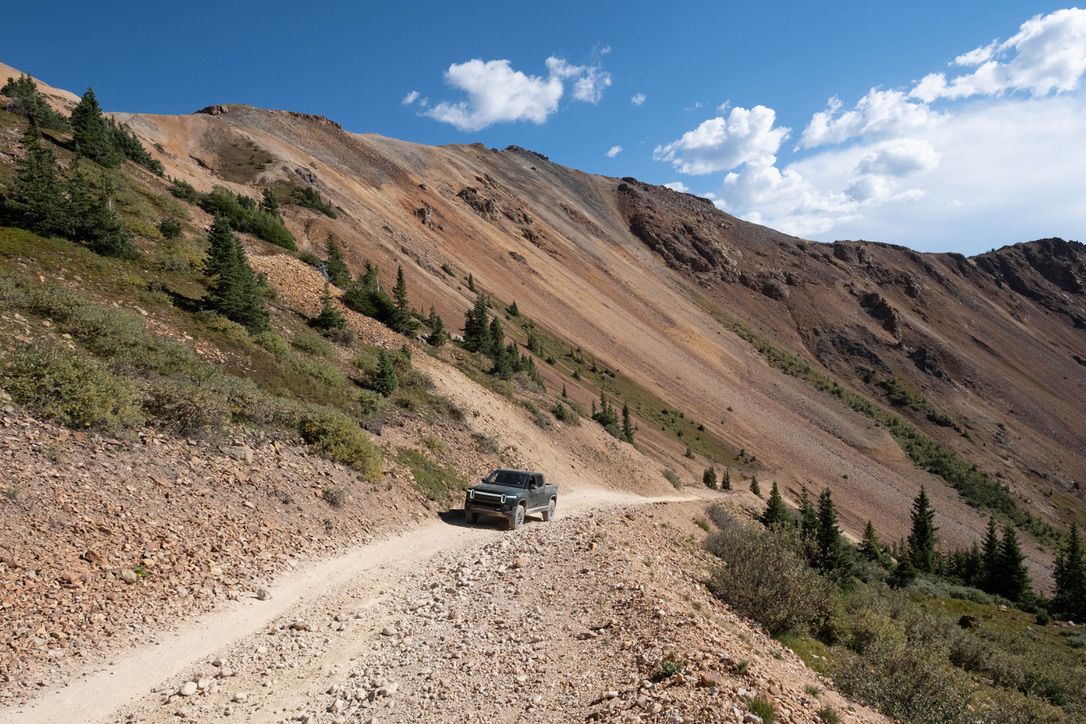
How long does it take to charge?
This is arguably the most important, and most difficult to answer, question.
Everyday life
Most of the time, no time. We charge it over night at home. 95% of our driving is within two hours of our home, so we charge it to 100% when necessary and then charge it again when we get home. From Denver we can get to a ton of places (all of the summit county ski areas, RMNP, The Tenmile range, Indian Peaks, Colorado springs) and home with a single charge.
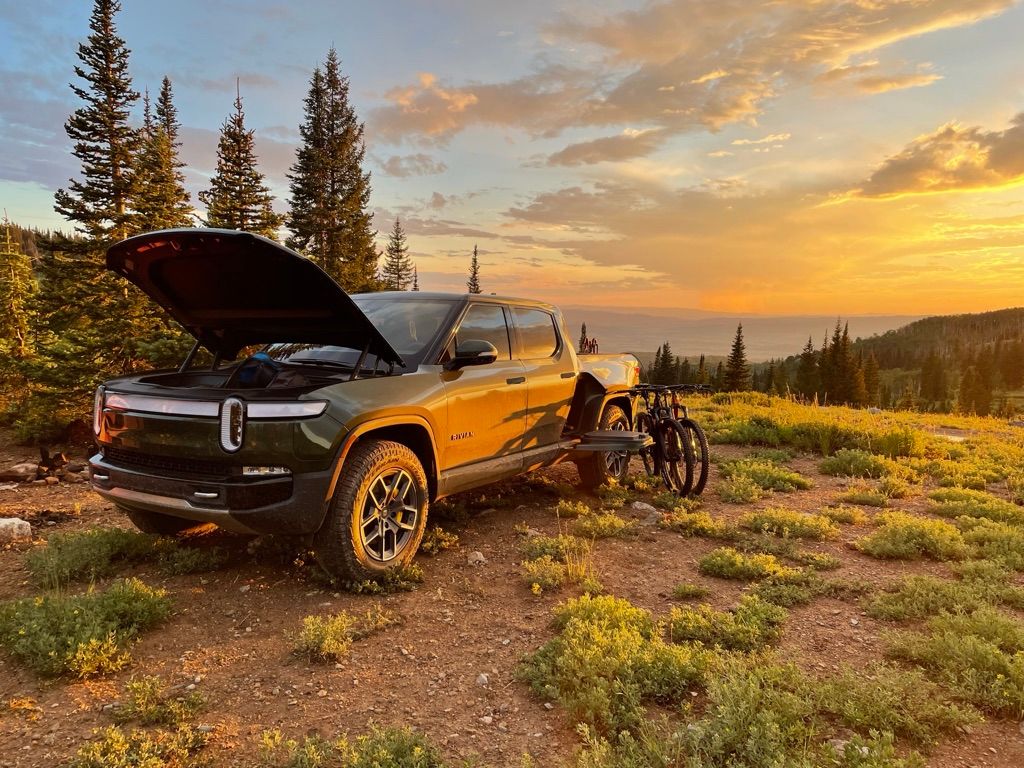
Road tripping
Road tripping is of course where the EV slows you down. On trips, you're typically looking at two types of charging: L2 charging and DCFC. DCFC is the fastest, and in the Rivian you can charge at up to about 215kW. On an ideal charger, this results in a charge from ~10% battery to ~80% battery in around a 30-40 minutes. The Rivian has a much larger battery (~135kWh) compared to smaller EVs (75-80kWh for a vehicle with an equivalent range). While a larger battery often means faster charging, the Rivian still takes a bit longer than some other EVs. That results in about 30 minutes of charging for every 3 hours of normal driving. Incorporating charging, we plan on about a 20% increase in travel time.
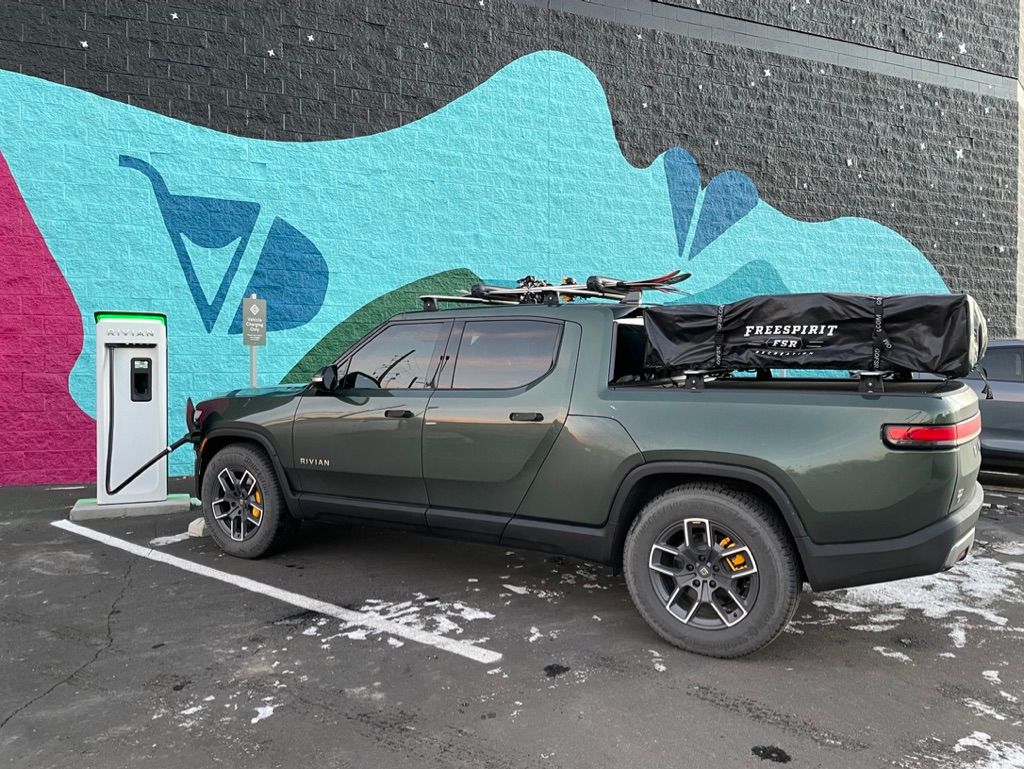
Caveat: Those charging numbers are with an ideal charger. Some chargers in the more remote areas of Colorado only have 50-75kW chargers; these would require 1-2 hours of charging in order to re-charge that same range (10-80%). While sometimes that is alright, we will often try to take advantage of other charging options. That option is most often L2 charging.
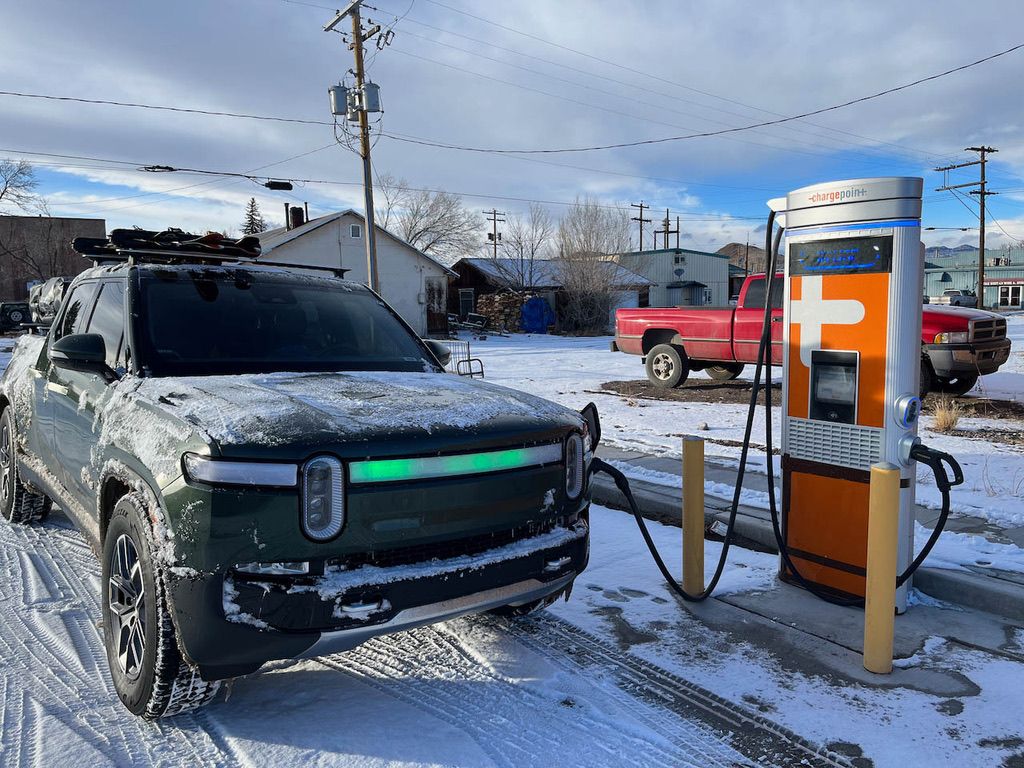
Overnight L2 charging can be great. We almost always try to choose a route or lodging that provides us with an opportunity to charge overnight, especially when traveling in these remote areas of Colorado. A lot of times that is an RV park - RV parks generally have plugs you can use to get 50%+ overnight, which can eliminate the need for a fast charger. If you stay somewhere a few nights, it also means you can drive basically as far as you want during the day and can always return to get a full charge for the next day. Pretty sweet. Not always an option though, and some RV parks are picky about EV charging, so contact them in advance.
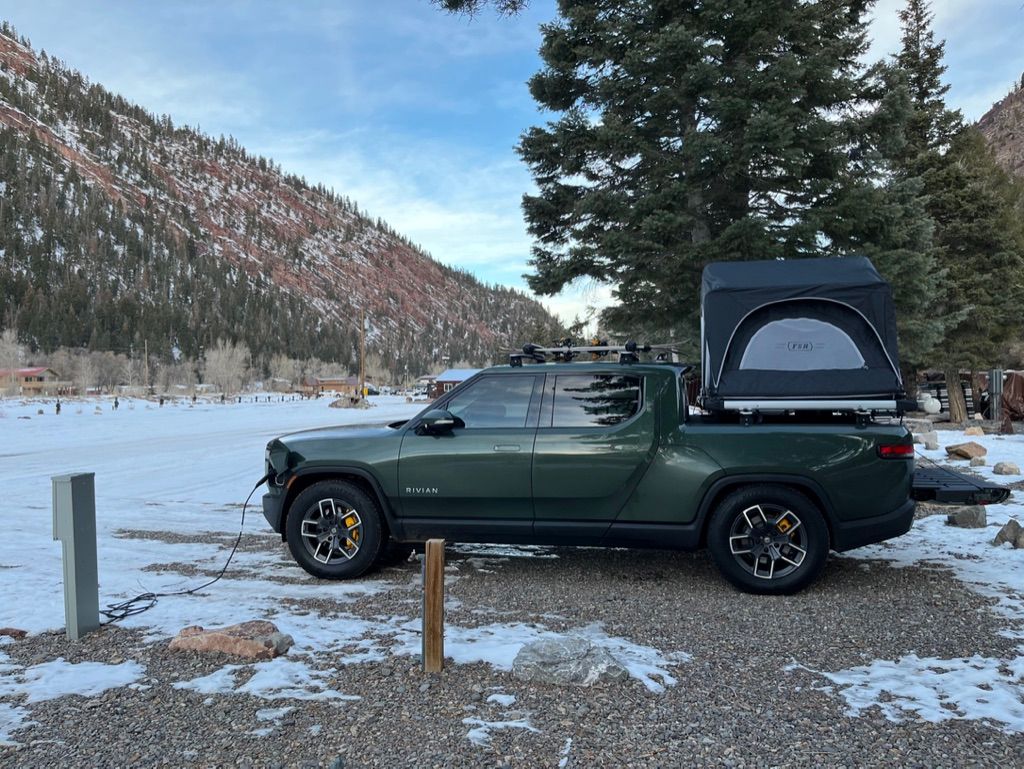
This also means that if you plan your lodging well, and don't have more than a couple hours of driving to do per day, you can do entire trips without fast charging, only using L2 charging at your lodging.
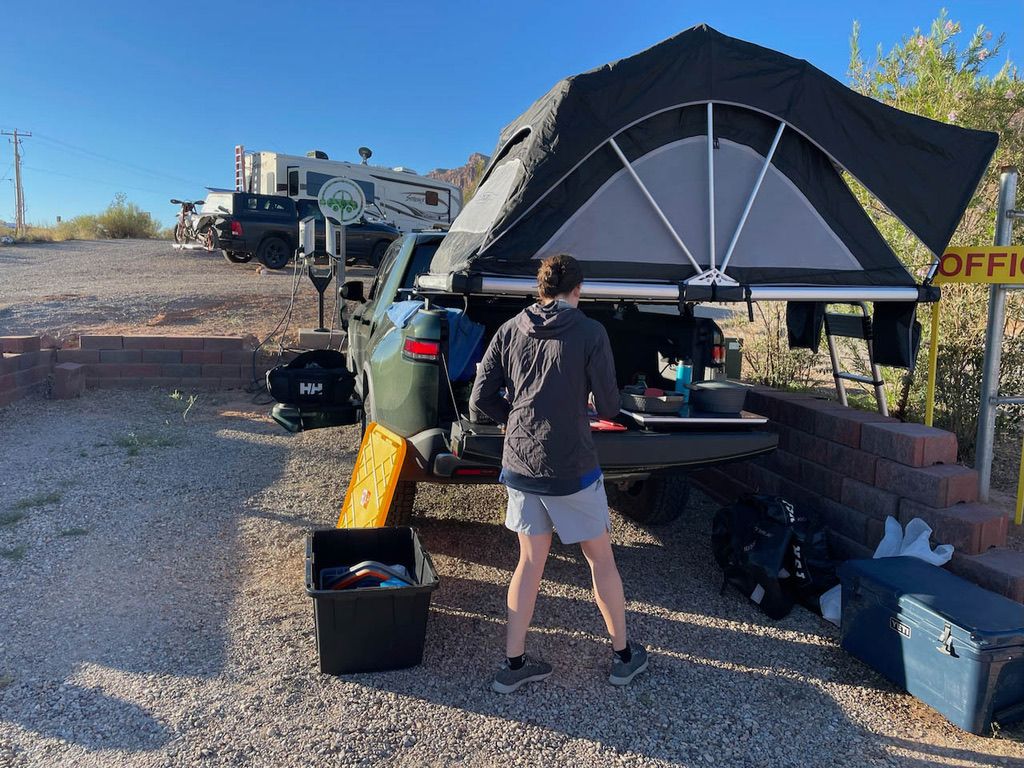
L1 (standard 120V outlet) is not all that practical on the Rivian. While other EVs can get meaningful charge in a few hours, the battery of the Rivian is just too large. It would take days to fill the battery; hours to get just a few miles down the road.
TL;DR: 95% of our driving, we charge overnight, and it takes no time. On trips, 30-60 minutes to refill the battery, depending on a lot of factors.
How much range do you get?
This is one area I have been pretty impressed with, although it has gotten kind of muddy with the late 2022/early 2023 software updates. Rivian is pretty honest about the range of these vehicles. We can actually get the advertised range, at reasonable highway speeds and conditions, and even more if we go into conserve mode (Rivian's more efficient 2WD mode).
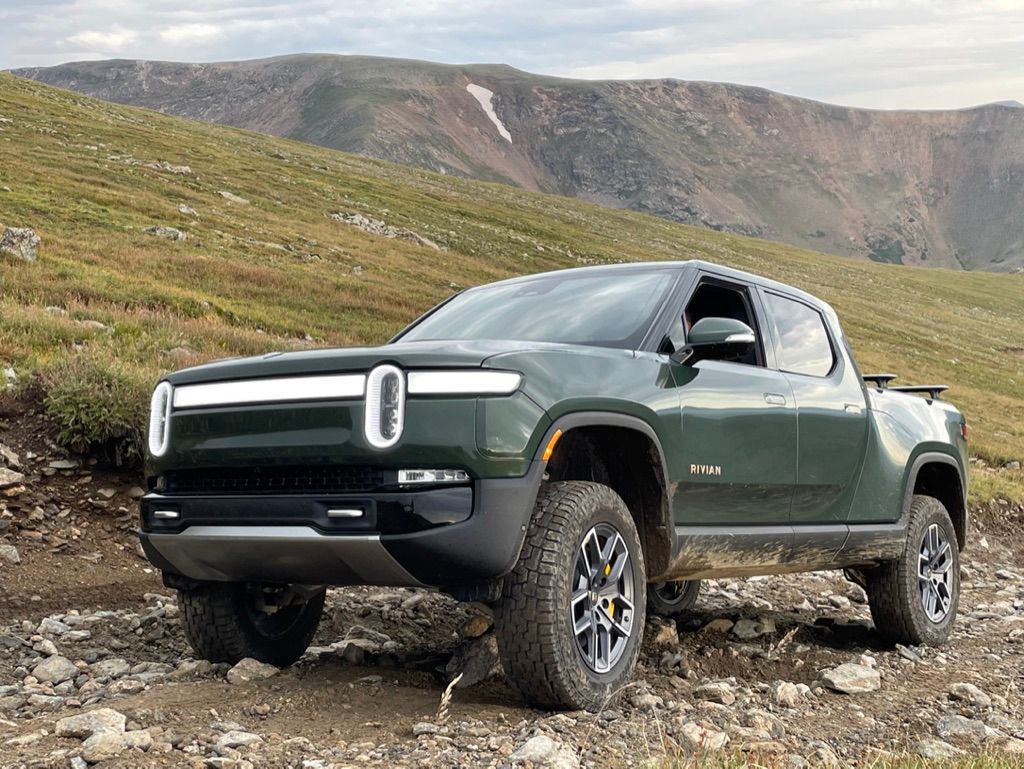
Reading online, you definitely find examples of owners of EVs who never get anywhere near their advertised range. Our last EV, the Volkswagen ID.4, was alright in this regard; we got pretty close to the advertised range, but not all the time. In the Rivian, we pretty consistently have an efficiency (2.2 mi/kWh - 2.3 mi/kWh) that aligns with the manufacturer advertised range (about 275 for our truck with 20" AT tires). Frankly I need a restroom break before we hit 200 miles anyway, so I do not mind a stop every 3 hours.
Winter
Winter: the range killer. Or so I thought. In our ID.4, our efficiency dropped from 3.6 to 2.7 when the mercury fell... And we added snow tires, and a ski rack. This dropped us from about 270 miles of range to 200 miles of range. In the Rivian? We have been averaging 2.0 mi/kWh, about 250 miles of range. Not so bad, in my opinion.
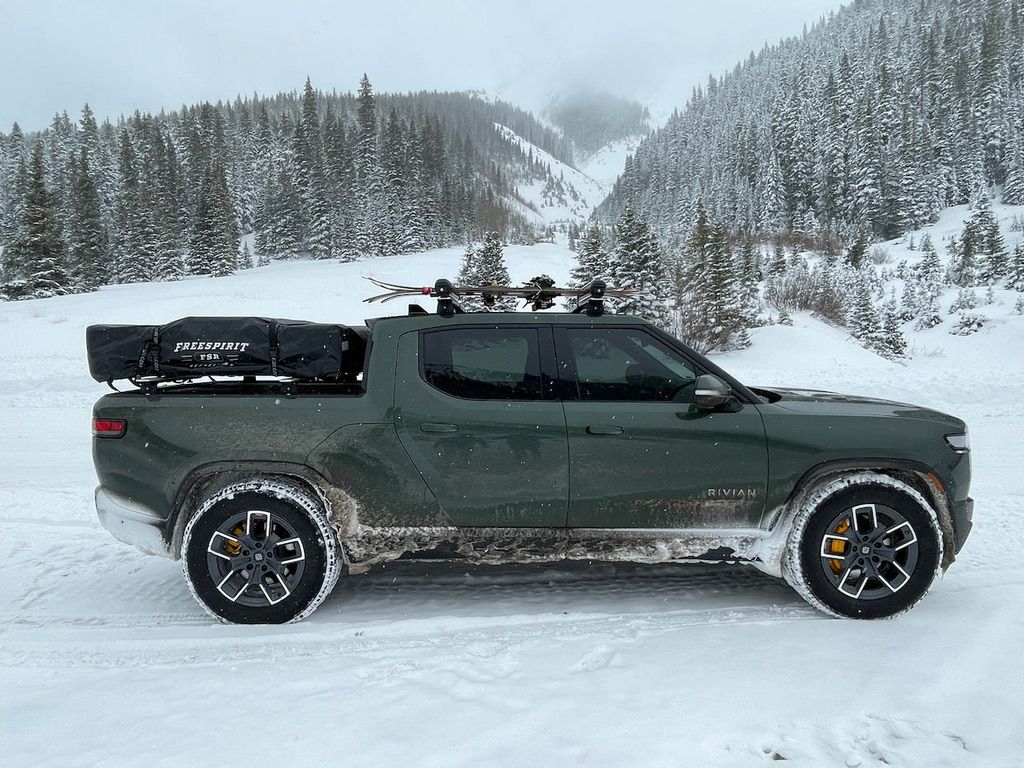
Mountains
Everyone gets nervous about range in the mountains, but you know what? It doesn't have all that significant of an impact, if you consider the round-trip result. It certainly takes more energy to go uphill, which can make range estimates confusing, but the regenerative braking on the downhill recoups nearly all of that additional energy, so you can almost ignore the mountains, if you are returning to the same location you started. We basically just look at the round trip mileage and if it would be fine on flat ground, it is probably fine in the mountains.
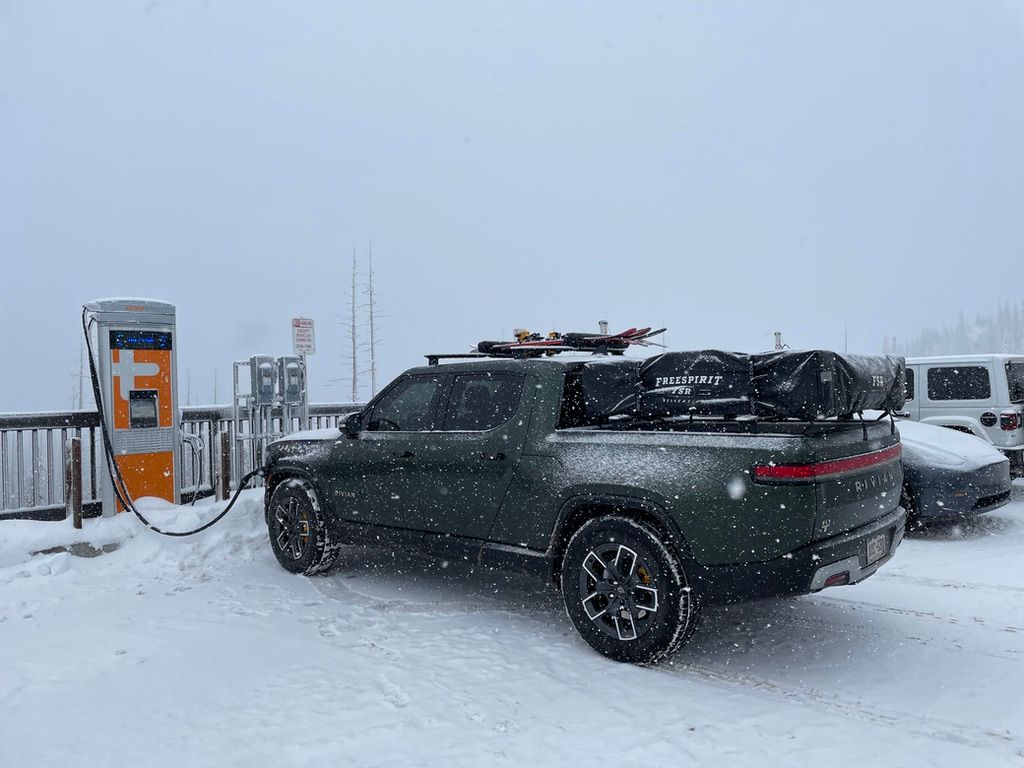
Charging at high elevations is great though. When you come back downhill it feels like you could go forever; we just got back from skiing in crested butte, and after L2 charging during the ski day (no time spent!), we were able to make the 4+ hour drive home (5 hours with traffic) using only 70% of a charge.
TL;DR: We get about 250 miles of range in winter, 275-300 in the summer.
You can take it off-road?
The R1T is defined by Rivian as an "Adventure Vehicle". A lot of automaker commercials are trying to convince you their vehicles are adventure vehicles, and truly, you can have an adventure in any vehicle. But this thing is an adventure vehicle.
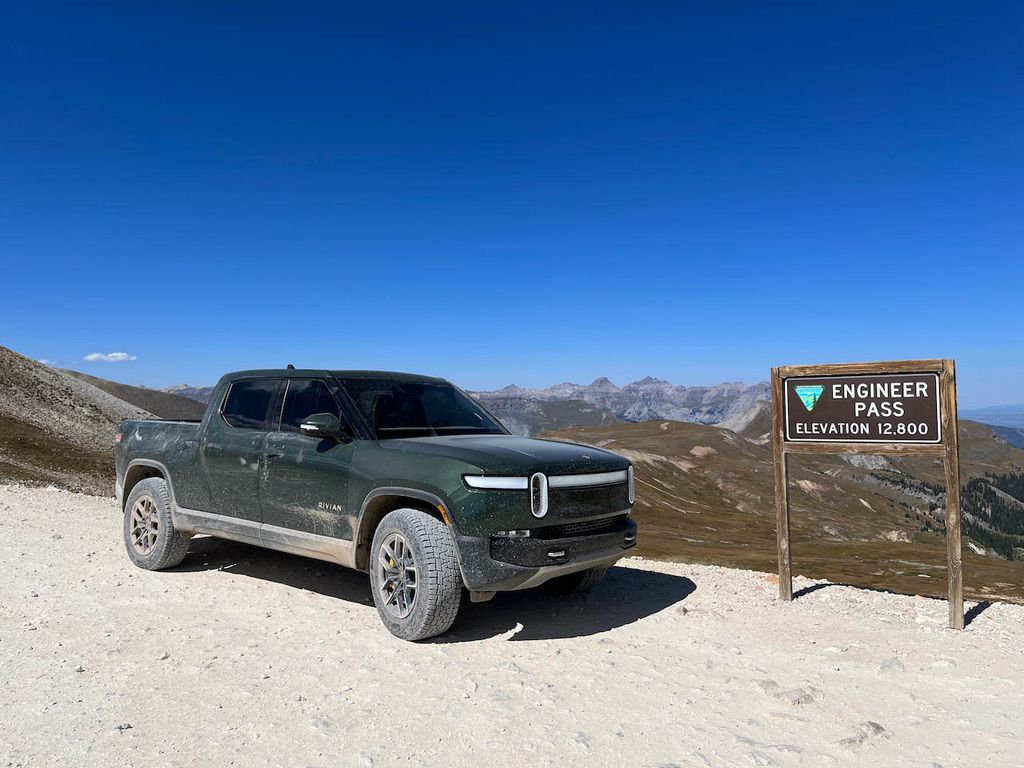
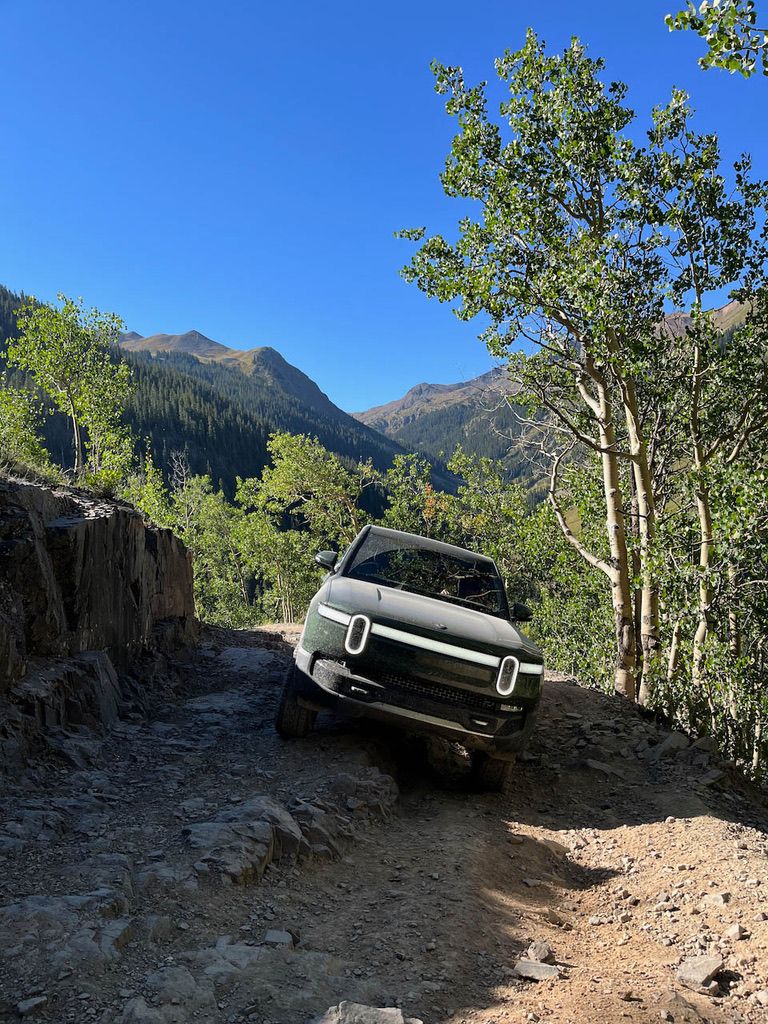
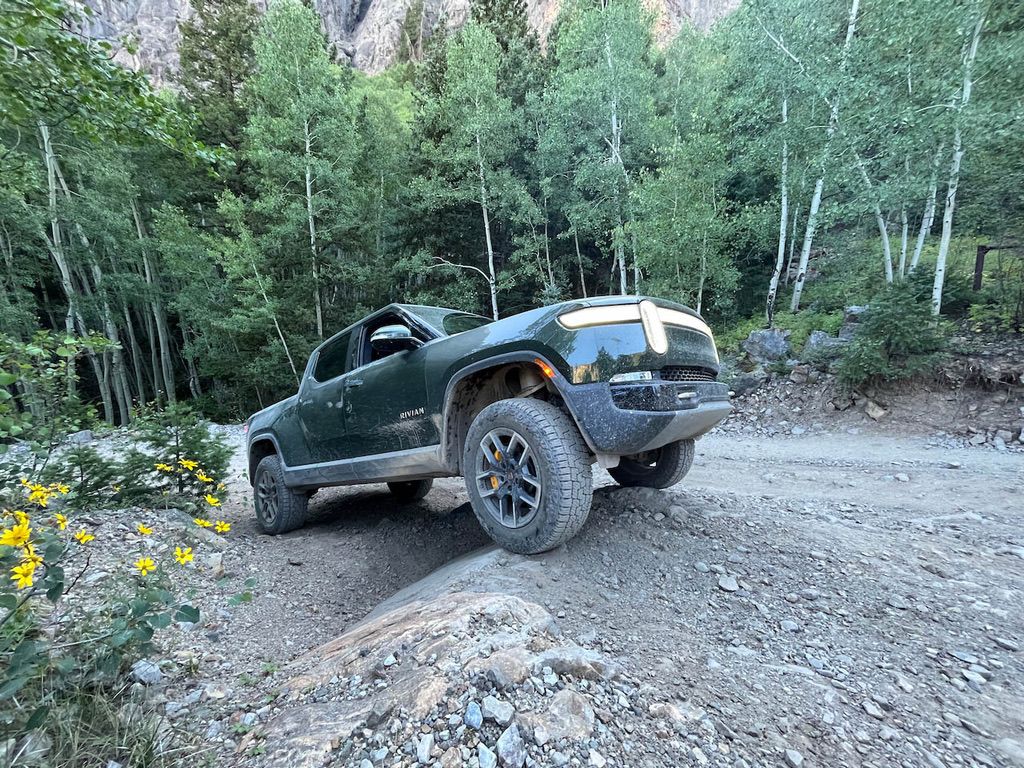
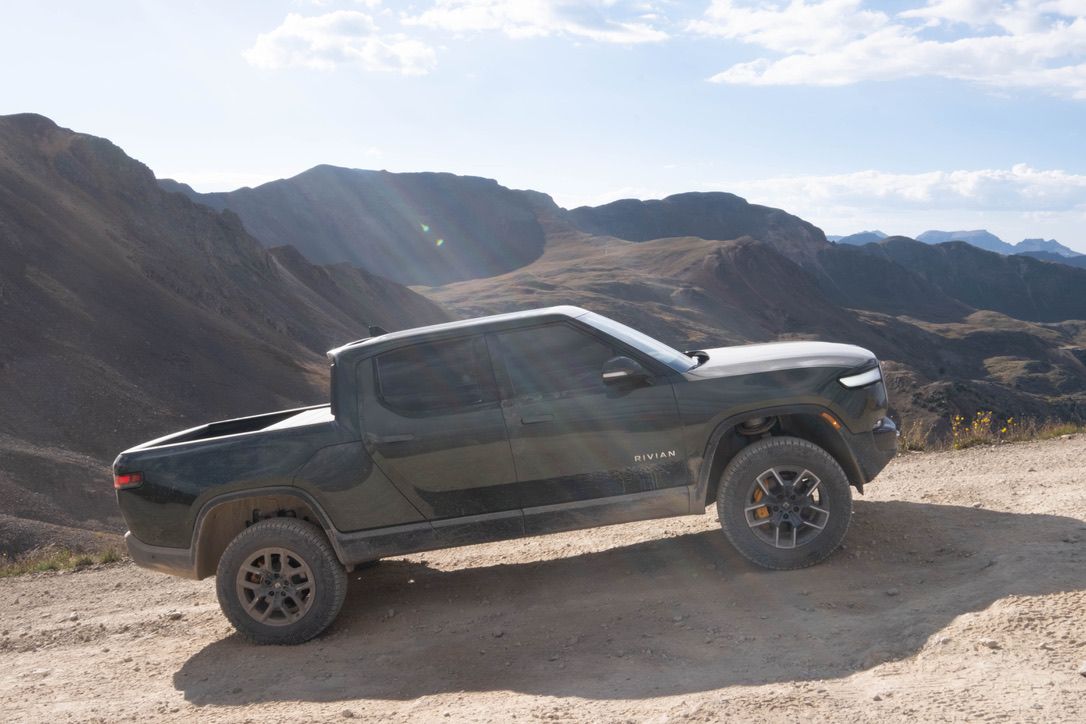
Seriously, I knew it would probably be good enough off-road, but it has been better than we expected. Of course it will not compare to that modified jeep that the owner trailered to the trailhead, but if you are looking for a vehicle that will get you up 95% of roads? This one will do it quietly, comfortably, and easily. It has crawled smoothly up every obstacle we have put it up against, thanks to it's 15" of ground clearance and 900+ ftlbs of torque.
We spoke to legitimately every single person we passed while driving the Alpine Loop out near Silverton, CO this past summer, all excited to see an EV on the roads. Even the difficult section between Ouray and Engineer pass was easy in the Rivian.
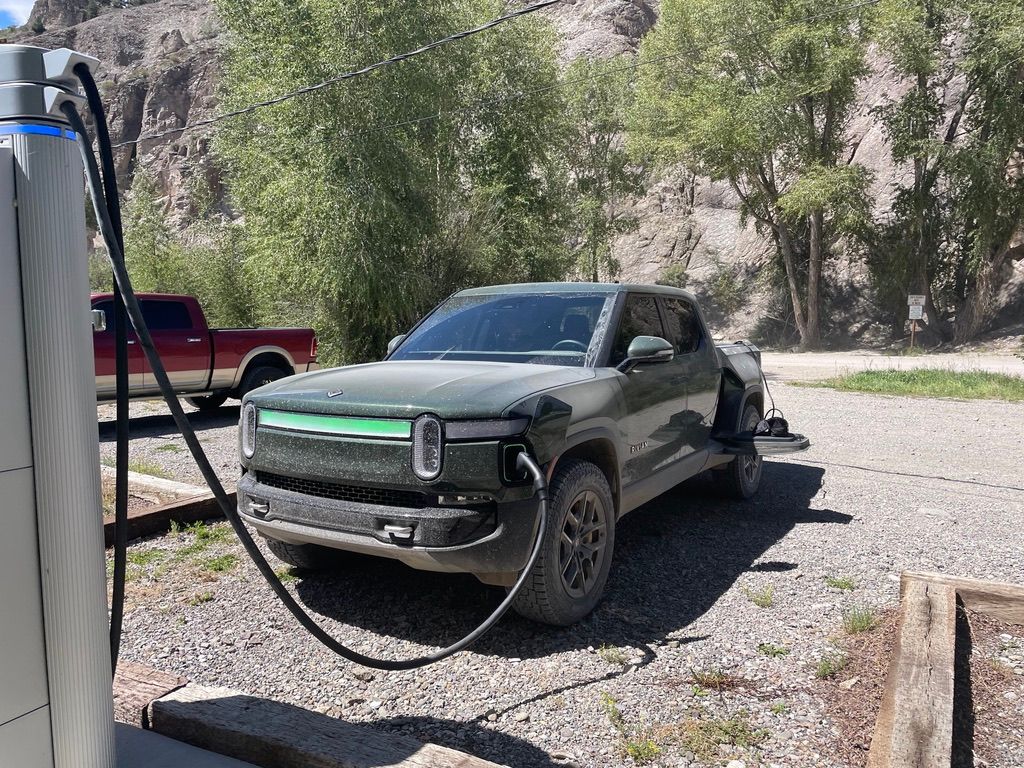
TL;DR: It is capable enough for 95% of people who are going off-roading.
What problems have you had?
You always hear that vehicle buying best practice: Never buy the first year of a new model. Well this was the first year of a new model... and the first model from a brand new electric vehicle automaker. Definitely not a risk-free decision, and we knew that going in. Biggest issue: The Tonneau cover.
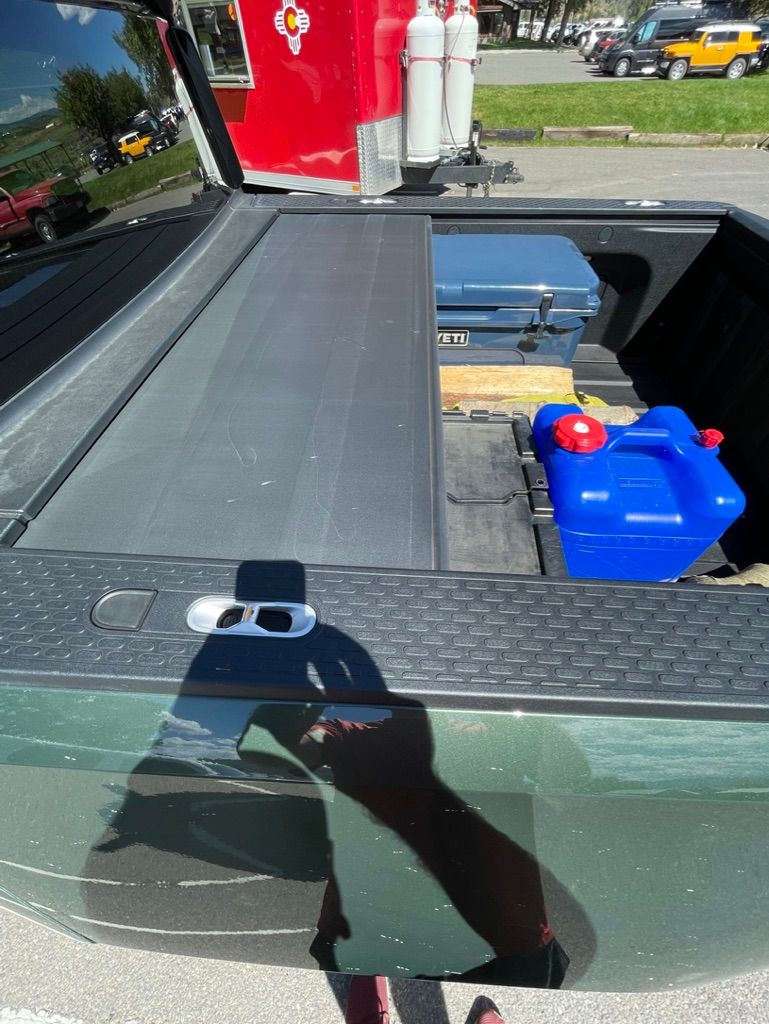
On a trip to Ouray last summer, our Tonneau cover got jammed and has been broken ever since. Service personnel removed the stuck panels, and attempted to install a new cover, but it failed during install. Rivian is redesigning the cover, estimated to be replaced in Early 2023 (at the time of writing this, it is March 2023, and no word on the replacement). Is it a bummer? Yes. Am I glad this is the biggest issue we've had with our truck? Absolutely.
Generally, our truck has been issue free, which is pretty impressive given the level of abuse we have already put it through. It's quiet, comfortable, and more capable in more situations than probably any other vehicle on the market.

There have been two recalls that have required a 5 minute inspection (our truck did not have the issues the recall was looking for), and some software bugs... and thats it.
TL;DR: Fewer issues than you'd expect for a high-performance off-road capable electric vehicle from a brand new automaker.
How much did it cost?
At the time of our reservation, our R1T was the same price as a model Y after tax credits. Two and a half years later, that story is pretty different... There are a lot more viable electric vehicles on the market, and Tesla has dropped their prices substantially.
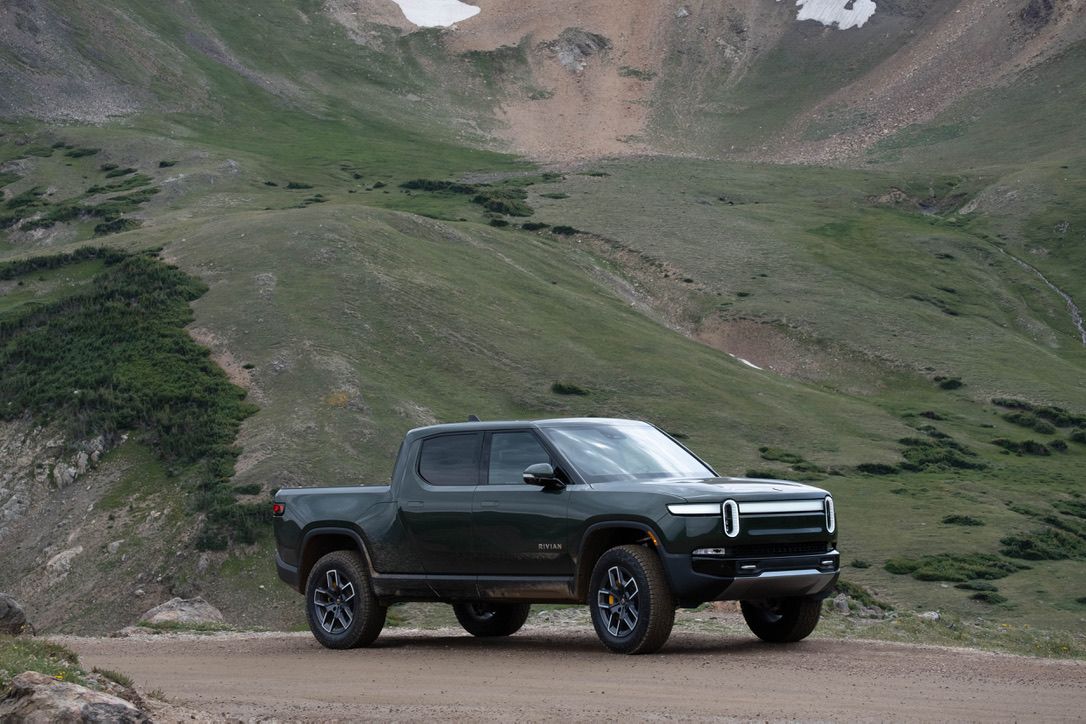
Our truck was about $65k after tax credits. That is a pretty hefty price tag, and it has gotten higher (right now an equivalent truck is about $93k, and the tax credit is less certain).
Fuel Savings
So cost-wise, how much does an electric vehicle save? Fuel is the big difference. We pay about $.038/mile charging at home, using the EPA estimate, which includes charging losses (up to 10% depending on the situation). If we look at the EPA estimate of a 2023 Toyota Tacoma and the 2022 average gas price, it works out to $.166/mile. If we look at a conservative lifetime ownership (this would only be 5 years for us) of 100k miles, that will save $13,000 in fuel, relative to a 2023 Toyota Tacoma. If you are comparing to a 4WD gas vehicle, that brings the effective cost of our R1T down to $52k.
TL;DR: Incorporating fuel savings and tax credits, it costs us about 10-15k more than a Toyota Tacoma. At current pricing, it will cost quite a bit more.